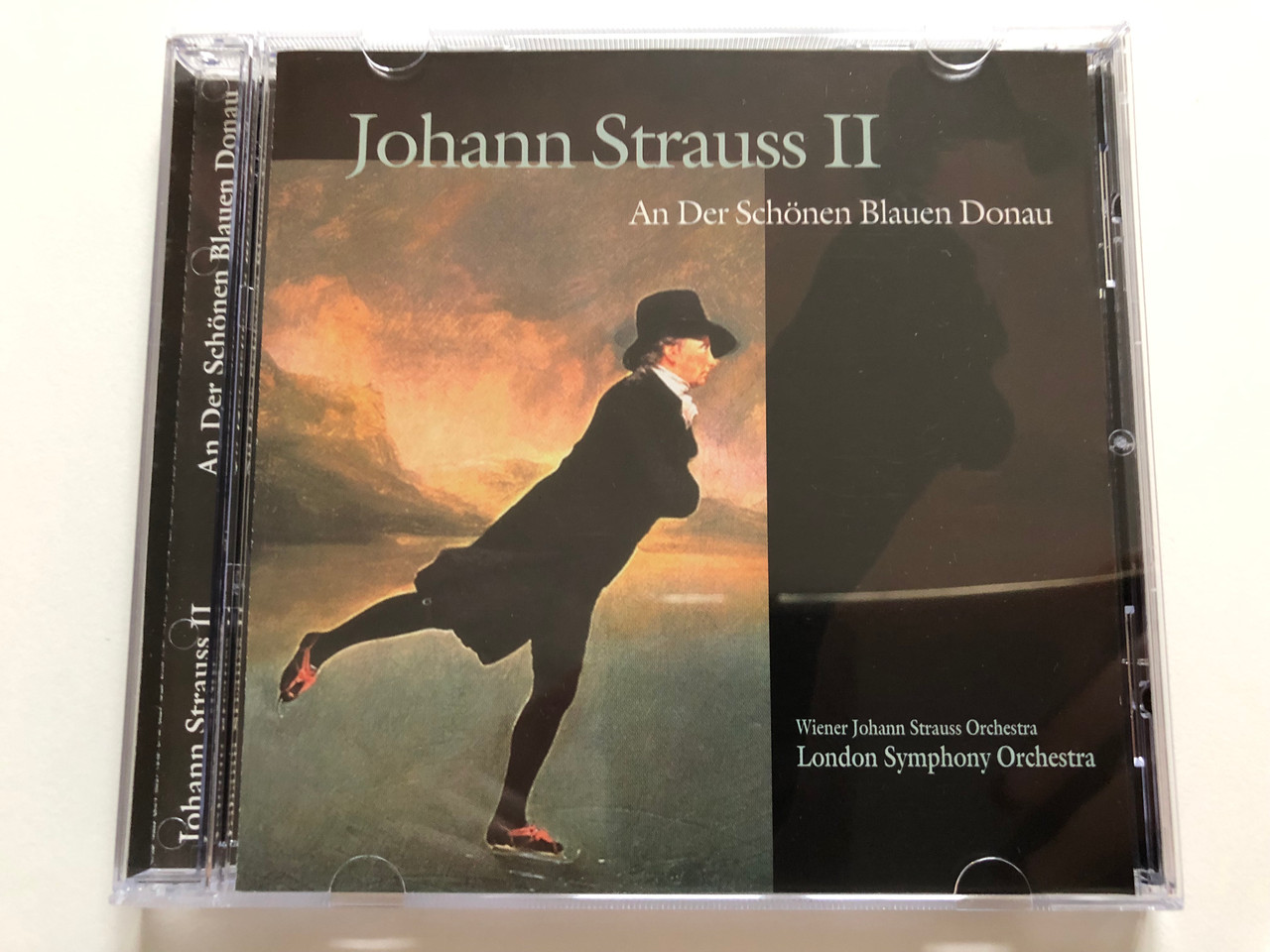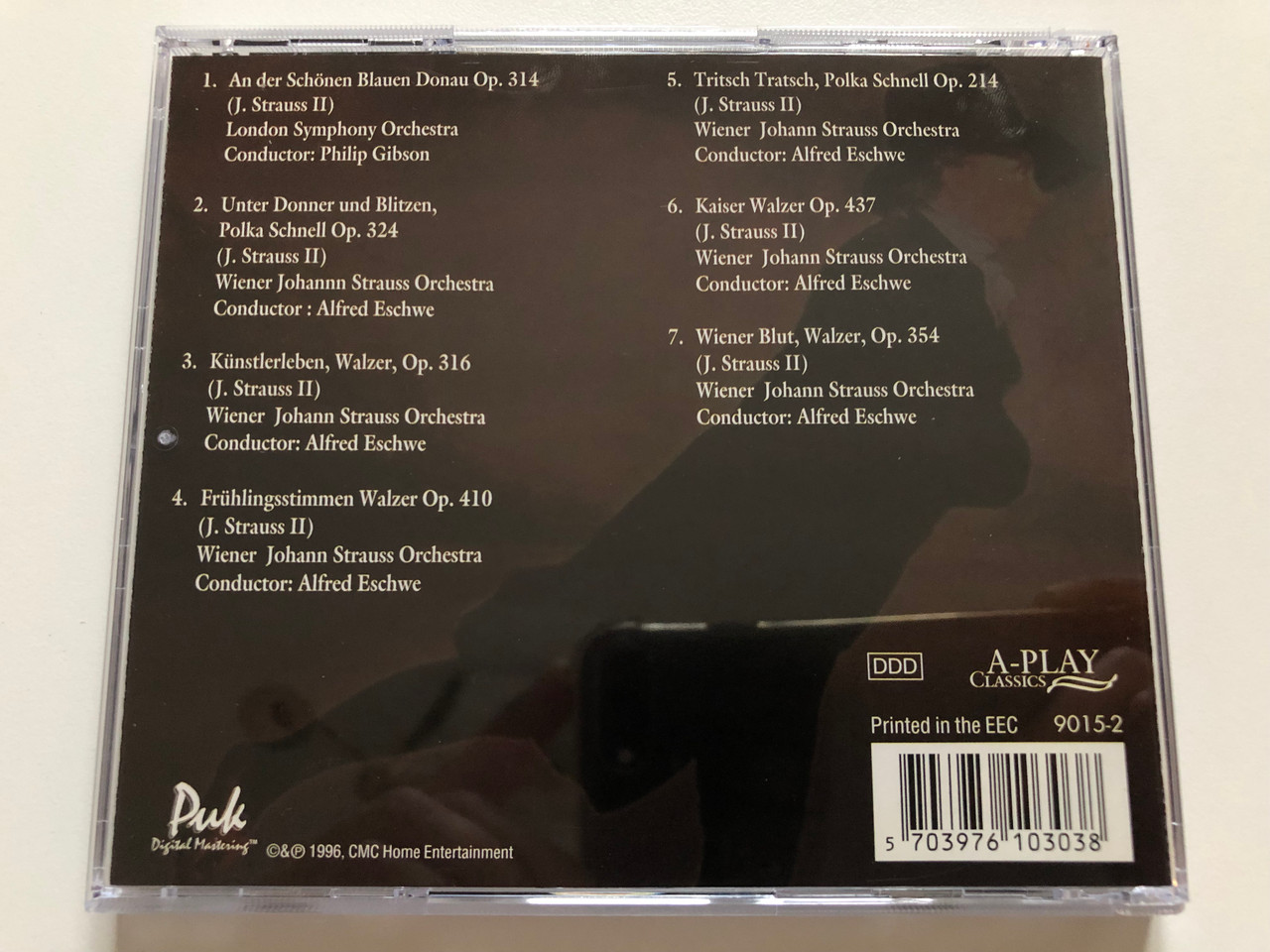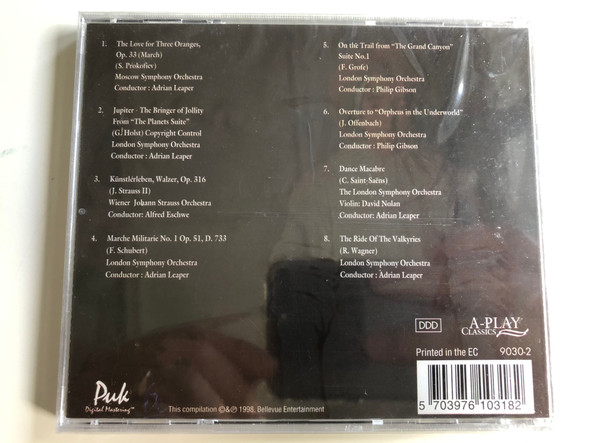Description
Johann Strauss II - An Der Schönen Blauen Donau / Wiener Johann Strauss Orchestra, London Symphony Orchestra / A-Play Classics Audio CD 1996 / 9015-2
UPC 5703976103038
"The Blue Danube" is the common English title of "An der schönen, blauen Donau", Op. 314 (German for "By the Beautiful Blue Danube"), a waltz by the Austrian composer Johann Strauss II, composed in 1866. Originally performed on 15 February 1867 at a concert of the Wiener Männergesangsverein (Vienna Men's Choral Association), it has been one of the most consistently popular pieces of music in the classical repertoire. Its initial performance was considered only a mild success, however, and Strauss is reputed to have said, "The devil take the waltz, my only regret is for the coda—I wish that had been a success!"
After the original music was written, the words were added by the Choral Association's poet, Joseph Weyl. Strauss later added more music, and Weyl needed to change some of the words. Strauss adapted it into a purely orchestral version for the 1867 Paris World's Fair, and it became a great success in this form. The instrumental version is by far the most commonly performed today. An alternate text was written by Franz von Gernerth, "Donau so blau" (Danube so blue). "The Blue Danube" premiered in the United States in its instrumental version on 1 July 1867 in New York, and in the UK in its choral version on 21 September 1867 in London at the promenade concerts at Covent Garden.
When Strauss's stepdaughter, Alice von Meyszner-Strauss, asked the composer Johannes Brahms to sign her autograph-fan, he wrote down the first bars of "The Blue Danube", but adding "Leider nicht von Johannes Brahms" ("Unfortunately not by Johannes Brahms").
Der Walzer An der schönen blauen Donau (häufig kurz: Donauwalzer) wurde von Johann Strauss (Sohn) im Spätherbst 1866 und Winter 1866/67 komponiert und am 15. Februar 1867 mit einer eigenen Fassung mit dem Wiener Männergesang-Verein uraufgeführt. Die erste Aufführung der Konzertfassung des als opus 314 veröffentlichten Walzers fand am 10. März 1867 im k.k. Volksgarten statt. Er basiert kompositorisch auf Melodien, die Strauss bereits in früheren Werken verwendete. Der Walzer wurde bald zu einer heimlichen Hymne Österreichs und wird regelmäßig zum Jahreswechsel gespielt.
Tracklist:
| 1 | An Der Schönen Blauen Donau Op. 314
Conductor – Philip Gibson
Orchestra – The London Symphony Orchestra
Conductor – Philip Gibson
Orchestra – The London Symphony Orchestra
|
10:01 | |
| 2 | Unter Donner Und Blitzen
Conductor – Alfred Eschwe
Orchestra – Wiener Johann Strauss Orchestra
Conductor – Alfred Eschwe
Orchestra – Wiener Johann Strauss Orchestra
|
2:56 | |
| 3 | Künstlerleben, Walzer, Op.316
Conductor – Alfred Eschwe
Orchestra – Wiener Johann Strauss Orchestra
Conductor – Alfred Eschwe
Orchestra – Wiener Johann Strauss Orchestra
|
9:07 | |
| 4 | Frühlingsstimmen Walzer, Op.410
Conductor – Alfred Eschwe
Orchestra – Wiener Johann Strauss Orchestra
Conductor – Alfred Eschwe
Orchestra – Wiener Johann Strauss Orchestra
|
6:37 | |
| 5 |
Tritsch Tratsch, Polka Schnell Op.214
Conductor – Alfred Eschwe
Orchestra – Wiener Johann Strauss Orchestra
Conductor – Alfred Eschwe
Orchestra – Wiener Johann Strauss Orchestra
|
2:33 | |
| 6 | Kaiser Walzer Op.437
Conductor – Alfred Eschwe
Orchestra – Wiener Johann Strauss Orchestra
Conductor – Alfred Eschwe
Orchestra – Wiener Johann Strauss Orchestra
|
11:18 | |
| 7 | Wiener Blut, Walzer, Op. 354
Conductor – Alfred Eschwe
Orchestra – Wiener Johann Strauss Orchestra
Conductor – Alfred Eschwe
Orchestra – Wiener Johann Strauss Orchestra
|
8:57 |
- Composed By – Johann Strauss II






























